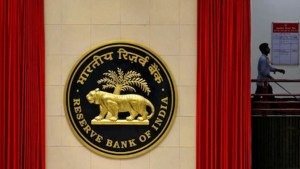
ECB CUT BENCHMARK RATES, FED SET TO CUT RATES SOON, HOW WILL INDIA REACT – IS A RATE ACTION IN THE OFFING?
While the European Central Bank delivered a quarter-point interest rate cut, marking its second reduction to the repo rate this year, and the US Federal Reserve expected to announce its first interest rate cut in over four years since 2020, a report by DBS Bank said that India is forecasted to keep a watch on inflation.
India’s retail inflation for August stood at 3.65 per cent, slightly higher than the 3.6 per cent inflation print in July, and it was the second consecutive month that the inflation based on the consumer price index (CPI) has undercut the RBI’s target of 4 per cent. This might act as a positive sign for the RBI to finally begin lowering the benchmark repo rate. However, earlier last week, RBI Governor Shaktikanta Das had said that policymakers must remain steadfast amid some softening in inflation in the fast-growing South Asian economy, signaling he’s not in a hurry to loosen policy settings.
The RBI Monetary Policy Committee (MPC) had, in its last meeting in August, left the repo rate unchanged for the ninth time at 6.50 per cent
India’s August inflation, DBS Bank said, came in slightly above expectations, mainly on the divergence in food vs ground-level data. Food prices corrected (-0.3 per cent m/m) much less than was expected, across sub-segments like pulses, vegetables, cereals, sugar, etc. Other segments were along expected lines, with continued disinflation in fuel and modest service-sector pressures. Core inflation (ex-food and fuel) held steady at 3.4 per cent yoy, pointing to modest pass-through from previous telecom tariff hikes. Diesel and petrol prices might be cut if global crude (currently at three-year low) stays soft. Brent is down 10% MTD vs FY24’s average, capping imported costs. “High frequency food costs have eased further this month, and we will monitor if this is reflected in the Sep sub-trends. Either way, receding base effects were expected to push up the headline print back above 4 per cent in Sep, with the current trend tracking a shade higher than our forecasted profile,” said Radhika Rao, Senior Economist, DBS Bank.
Under scanner
According to a report by DBS Bank, three developments will be closely watched. First, the four-year term of the three external members in the MPC concluding next month and names of new members expected to be announced ahead of the October rate review. Incoming members, the report said, might prefer to maintain the status quo in October but follow a broader MPC shift in December as more inflation and growth prints become available.
Secondly, global monetary conditions are likely to get conducive as the US Fed is expected to deliver at least 25 bps cut this month, with the accompanying dot plot likely to be parsed to gauge their forward-looking bias. With US inflation dropping to a three-year low of 2.5 per cent in August, the discussion is now on whether it will go for a 25 bps cut or a more aggressive 50 bps.
And lastly, the report said that the domestic data by way of growth momentum (2QFY GDP numbers out next month), inflation in the interim and rupee stability, are important factors which will guide policymakers.
ECB rate cut: Guidance on path forward
Meanwhile, while the ECB cut its benchmark rates by 25 bps for the second time this year taking the deposit facility rate to 3.5 per cent, DBS Bank said that there was no explicit guidance on the path forward, besides emphasizing the need to take a meeting-by-meeting approach and staying data dependent. ECB President Christine Lagarde cited the evolving inflation-growth trends as backing the rate cut. According to a Bloomberg report, President Christine Lagarde had said that the ECB is open to considering an interest-rate cut in October if the economy suffers a major setback — though the next comprehensive set of information will only be available at the following meeting. Her remarks, the report added, offer the clearest signal yet that policymakers are leaning toward waiting until December for their next move.
Radhika Rao said, “The Eurozone economy is expected to grow by 0.8 per cent in 2024 (in line with our forecast), rising to 1.3 per cent in 2025 and 1.5 per cent in 2026, marking a slight downward revision vs June, mainly owing to a weaker contribution from domestic demand. Growth conditions warrant further easing but correction in inflation is likely to be slower in midst of wage-led pressures and base effect led distortions as the previous disinflation in energy prices fall out of the annual calculations. With policy communication in July working as planned, the ECB might opt to slip into a status quo mode in October and crystallise the need for further easing in December, when the next batch of staff forecasts are available.”
DBS Bank foresees a total 100 bps reduction in rates by mid-2025, with half already delivered to date.
2024-09-16T06:56:09Z dg43tfdfdgfd